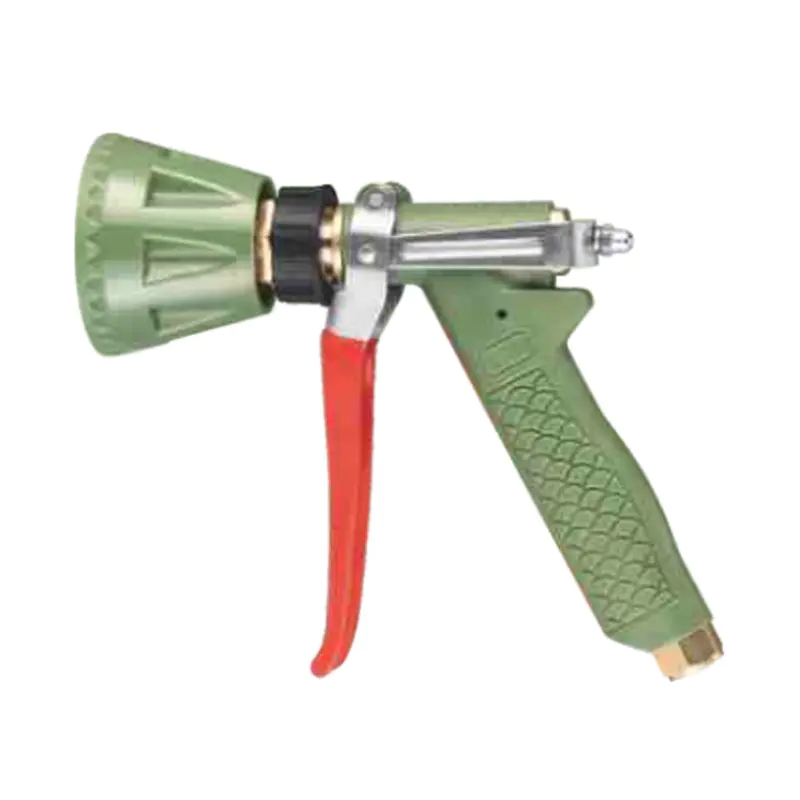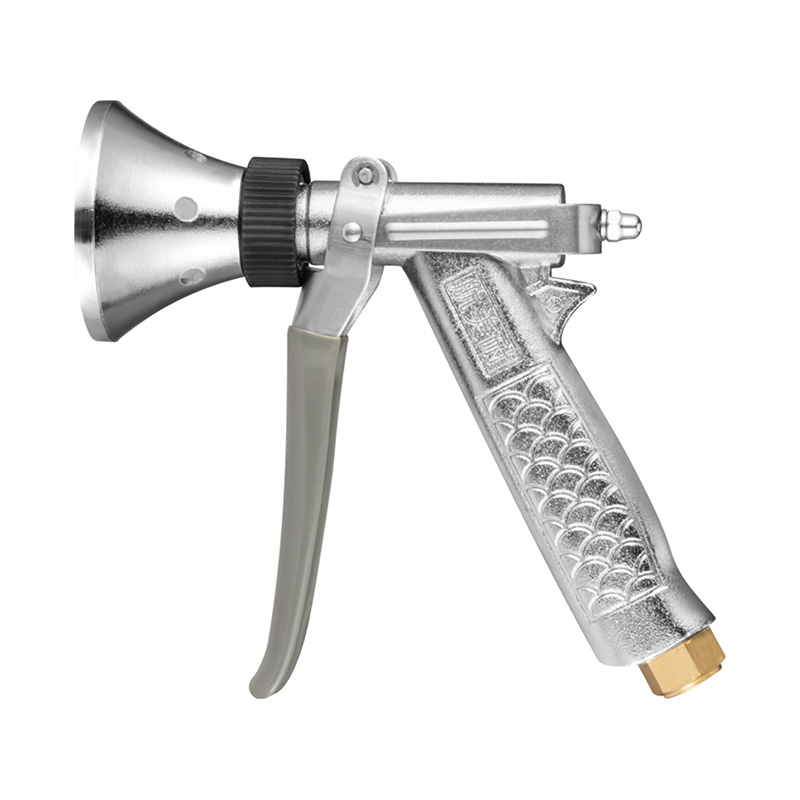This 451g multi-functional all-copper agricultural...
See DetailsIn modern agriculture, effective crop care relies heavily on tools that balance precision, efficiency, and durability. Straight agricultural spray guns and high pressure spray nozzles play an essential role in ensuring that pesticides, fertilizers, and other treatments are applied evenly and effectively. Understanding the features and proper use of these spraying tools can help farmers optimize crop protection while managing resources carefully.

Features and Benefits of Straight Agricultural Spray Guns
Straight spray guns are designed to provide a steady and controlled spray pattern, making them suitable for a variety of agricultural tasks. Unlike angled or curved spray guns, the straight design allows for straightforward handling and easier targeting, especially in row crops or orchards where precision is important.
One notable feature is the ergonomic design that helps reduce operator fatigue during extended use. The straight alignment aligns naturally with the user’s arm, allowing for better control and steadier spray application. This can be particularly helpful in large-scale operations where hours of spraying are required daily.
Materials used in the construction of straight spray guns often include corrosion-resistant metals and reinforced plastics to withstand exposure to chemicals and outdoor environments. These durable materials contribute to consistent performance and longevity, reducing the need for frequent replacements.
The Role of Agricultural High Pressure Spray Nozzles
Agricultural high pressure spray nozzles work in tandem with spray guns to atomize liquids into fine droplets suitable for coverage without runoff. The pressure level influences droplet size, spray reach, and uniformity. High pressure nozzles are particularly useful when working with thicker liquids or when longer spray distances are required.

These nozzles come in various designs, including flat fan, cone, and full cone spray patterns, each tailored to specific application needs. Choosing the correct nozzle shape and size affects both coverage and chemical efficiency. For example, cone nozzles provide more uniform distribution in orchard spraying, while flat fan nozzles are often preferred for row crops.
Using high pressure nozzles also helps improve penetration of sprays into dense foliage, increasing the effectiveness of pest or disease control measures. However, it’s important to match the nozzle pressure with the capabilities of the spray gun and pump system to avoid excessive wear or inconsistent spray patterns.
Practical considerations for using spray guns and nozzles
Proper maintenance and calibration are key to enhancing the effectiveness of direct spray guns and high-pressure nozzles. Regular cleaning prevents clogging, which can distort spray patterns and reduce coverage. Chemical residue in the nozzle or gun can cause clogging and corrosion if not flushed after use.
Calibration involves adjusting pressure and nozzle selection to achieve the desired flow rate and droplet size. Farmers can use calibration charts and flow meters to verify that the equipment is meeting the specific requirements of the crop and the chemical being applied. Overspraying wastes chemicals and can harm crops or the environment, while underspraying reduces efficacy.
Storage conditions also affect the life of spray equipment. Storing spray guns and nozzles in a dry, temperature-controlled environment can reduce the deterioration of seals and plastics. Regularly inspecting parts for wear or damage so that timely repairs can ensure consistent performance throughout the busy spraying season.
Improve efficiency and sustainability
Integrating direct spray guns and agricultural high-pressure nozzles into a well-planned crop care program can help with efficient chemical use and resource management. Precision spraying reduces the amount of chemicals needed and reduces environmental impact by avoiding drift and runoff.
Innovations in nozzle design and materials improve resistance to wear and clogging, resulting in longer runs and fewer interruptions. Additionally, pairing these spray systems with automatic or semi-automatic sprayers can improve precision and reduce labor costs.
Farmers committed to sustainable farming can also explore nozzles designed to reduce spray drift and optimize droplet size for precise spraying. These features help protect surrounding ecosystems while keeping crops healthy.
Combining direct spray guns with high-pressure nozzles helps strike a balance between operating efficiency and spraying accuracy. With proper selection, maintenance, and use, these tools can support effective crop management while adapting to the diverse needs of modern agriculture.